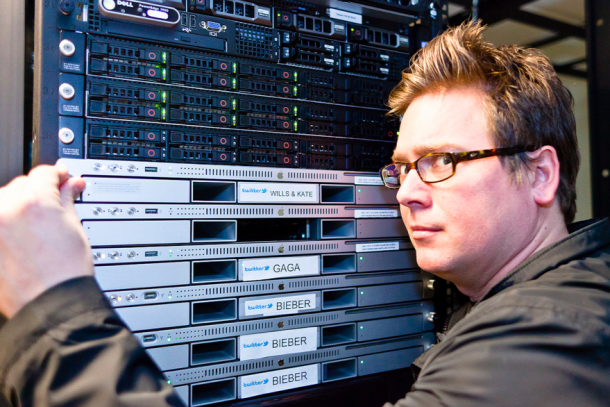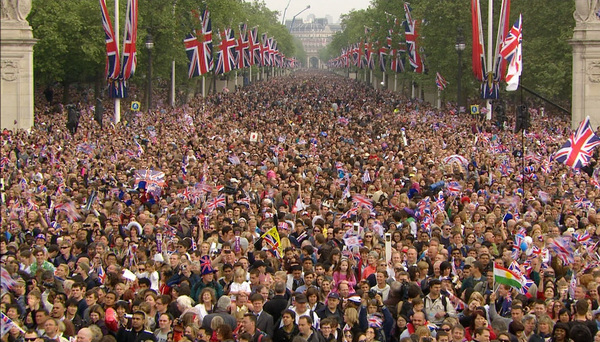Part 2 of 3
Picking up from where we last left off, in Digital Nomads – Part 1, I’d like to share some recent statistics that were released by Cisco in their Visual Networking Index: Global Mobile Data Traffic Forecast Update, 2010–2015. As you will see below, the mobile adoption and consumption statistics are staggering:
- Global mobile data traffic grew 2.6-fold in 2010, nearly tripling for the third year in a row. The 2010 mobile data traffic growth rate was higher than anticipated. Last year’s forecast projected that the growth rate would be 149 percent. This year’s estimate is that global mobile data traffic grew 159 percent in 2010.
- Last year’s mobile data traffic was three times the size of the entire global Internet in 2000. Global mobile data traffic in 2010 (237 petabytes per month) was over three times greater than the total global Internet traffic in 2000 (75 petabytes per month).
- Mobile video traffic will exceed 50 percent for the first time in 2011. Mobile video traffic was 49.8 percent of total mobile data traffic at the end of 2010, and will account for 52.8 percent of traffic by the end of 2011.
- There will be nearly one mobile device per capita by 2015. There will be over 7.1 billion mobile-connected devices, including machine-to-machine (M2M) modules, in 2015 – approximately equal to the world’s population in 2015 (7.2 billion).
- The mobile network will break the electricity barrier in more than 4 major regions by 2015. By 2015, 4 major regions (Sub-Saharan Africa, Southeast Asia, South Asia, and the Middle East) and 40 countries (including India, Indonesia, and Nigeria) will have more people with mobile network access than with access to electricity at home. The off-grid, on-net population will reach 138 million by 2015.
While we generally anticipate high growth rates with front-running technologies, Cisco’s report sheds light on more than simple tech adoption. What they’ve presented in their report illustrates just how seismic in nature the shift to wireless has become. Essentially, Cisco has captured and benchmarked the consumer shift to the un-tethered landscape. A wirelessly-interconnected landscape filled with small computers that are disguised as either a phone or a tablet or something else that’s so well concealed, you are unaware that it’s even there.
It now appears that we, as a population, have climbed over the hill of wires and entered the proverbial “Valley of Signals.”
I was about nine and a half years old on Wednesday, July 29, 1981, when Prince Charles and Diana were married – barely old enough to enjoy the royal pomp and statesmanship. Fast forward nearly 30 years. I’m sure most of you, like myself, watched at least some of Prince William and Kate’s wedding. Once again, I’m old enough to enjoy the royal pomp and statesmanship. However, this time, I felt a difference. A changing of the guard from old to new. In many ways, Will and Kate appear to have provided a face for an entire generation of super-connected Millennials – and television captured it.
While enjoying the broadcast(s), one moment in particular stuck out the most to me – and it wasn’t even a scene with Will and Kate. It was the moment reflected in the image above – the orderly procession of tens of thousands of spectators, walking from Westminster Abbey to Buckingham Palace for the couple’s kiss. The nerd in me could only think about the sheer volume of mobile media and voice traffic beaming out of that roving crowd. I suspect that many of the tweets that day trafficked their way through the standalone Wills and Kate server at Twitter. Biz and team were smart (see photo at top).
Fact: According to NBC, mentions of the #RoyalWedding hashtag topped one million by mid ceremony. *1
Honestly, it was a great sight to behold – lots of people having a good time and enjoying a temperate London morning. It reminded me of the opening ceremonies for the Olympic Games; when athletes enter arenas as teams, cameras in hand, snapping pix and smiling – documenting the experience not only for themselves, but also for their families, their friends and their nation.
See: Mashable’s Royal Wedding Snapshot
Now, let’s use that analogy to come up with an idea of the wireless traffic generated by the Royal Wedding spectators. I’ve read estimates of 1,000,000 general route spectators and 500,000 balcony spectators. *1 Considering the amount of people captured in the image and video above, I think it’s fair to use a headcount of 1MM to extrapolate our observations.
Here’s we know about the Royal Wedding, the UK and the UK’s technographic profile:
- 2008 UK population estimate – 61.4MM (the most recent we found) *3
- Approx 16MM smartphones are active in the UK *5
- With that in mind, 16MM / 61.4MM = 26% general population smartphone penetration
- Of smartphone users, 41.1% of Europeans access mobile media *5
- 1MM spectators actively participated *1
With these stats in mind, here are a few fun estimates we made for your consideration (these are conversational in nature, of course):
- Approximately 260,000 smartphones were present along the Royal Wedding route
- Of those with smartphones, it is probable that as many as 106,860 people were creating and disseminating content via mobile connections and applications – aka citizen journalists (for perspective, the New York Times has approx. 1,150 staff writers)
The communication horsepower that mobile technology and its applications provided the Royal Wedding spectators that day was impressive. And in many ways sets a precedent for what we can expect see with the 2012 London Games – for which most big brands are now preparing.
Much has changed since Prince Charles and Diana’s wedding in 1981. Inside the 30-year story arc between their royal wedding and Will and Kate’s, the desktop computer’s relevance arced as well. The connected environment is no longer relegated to fixed devices in workspaces or home. As we all have witnessed, it’s gone outside to the external environment. The connected environment is now in-home, out-of-home, in-car, in-store, in-mall, in-air, in-train, at-sea… on demand.
In Part 3 of this series, we’ll discuss a few of the ways that brands are activating in the connected environment – making strides to maintain brands that are relevant and resonate with their target consumers.
// Christopher Jones
Sources:
*1 – NBC News
*2 – ABC News
*3 – UK Office for National Statistics
*4 – Wikipedia
*5 – ComScore 2010 Mobile Year In Review
See: Digital Nomads – Part 1
See: Digital Nomads – Part 3
Repost with permission. Written on May 12, 2011 for Think Interactive.


